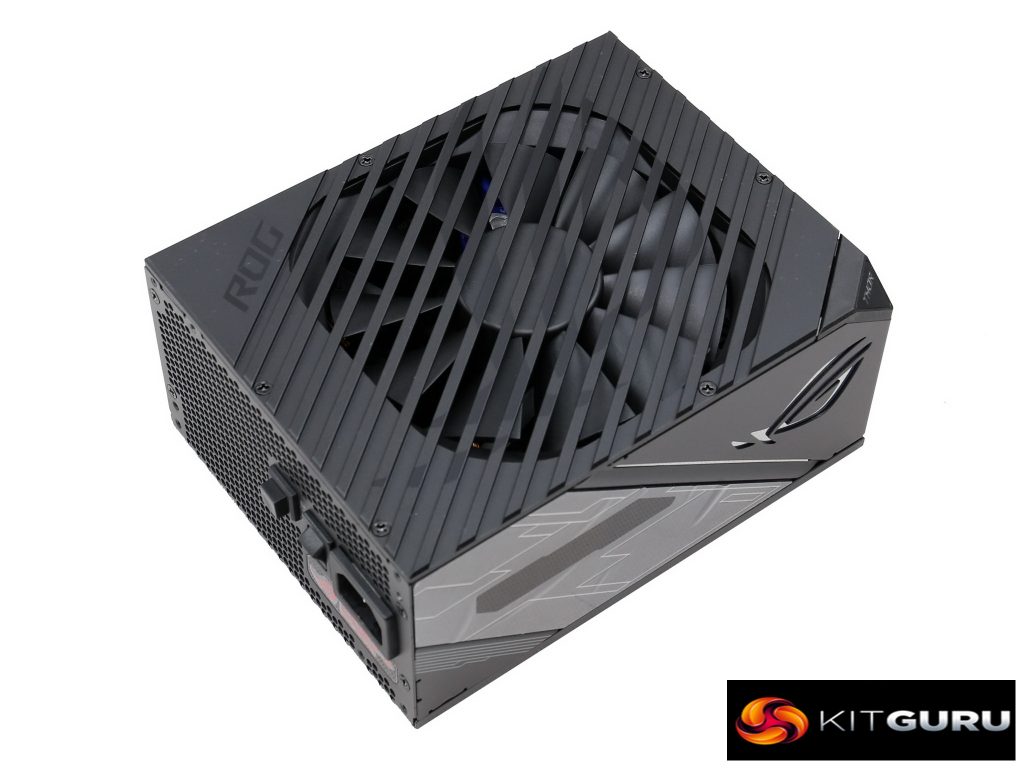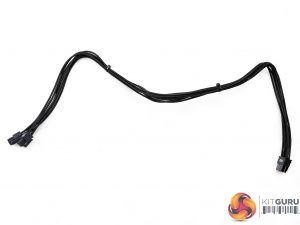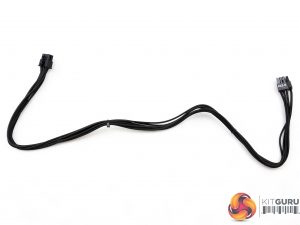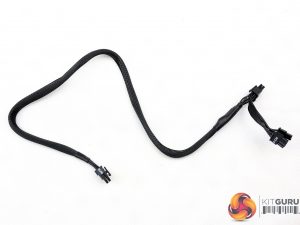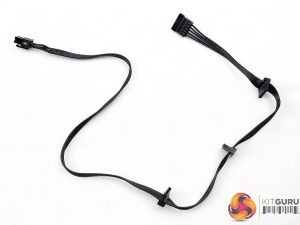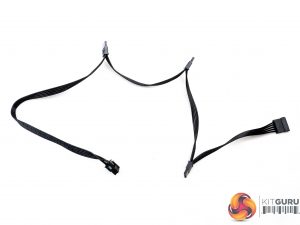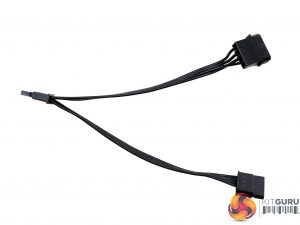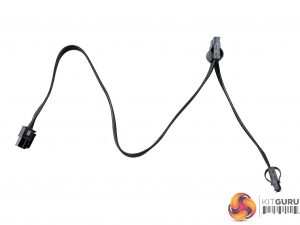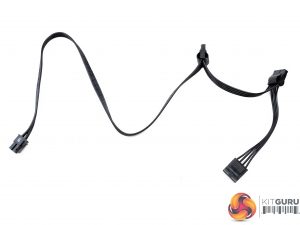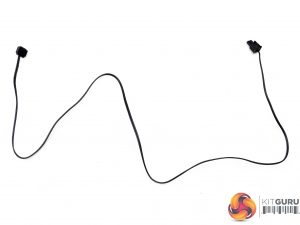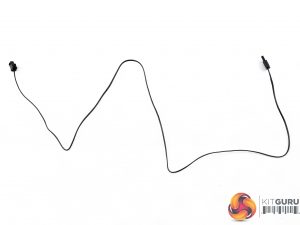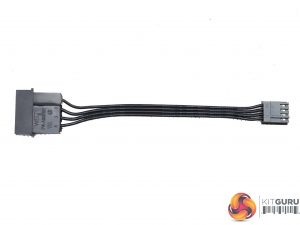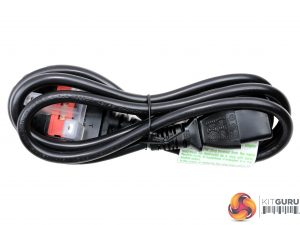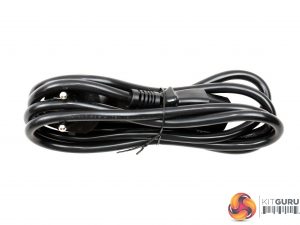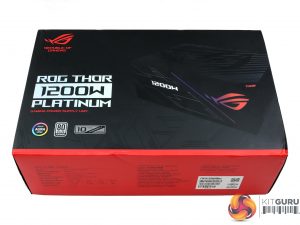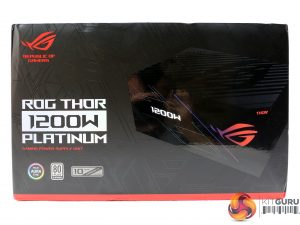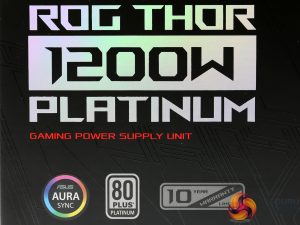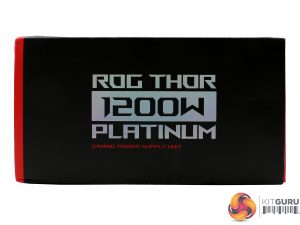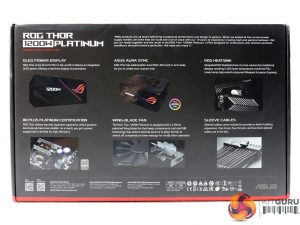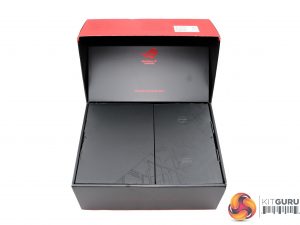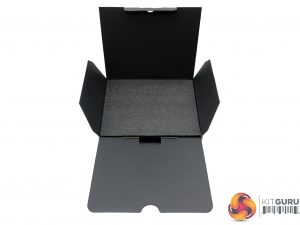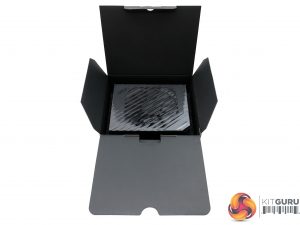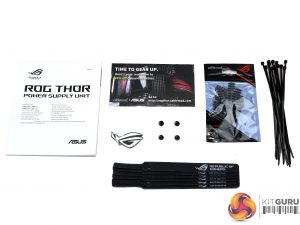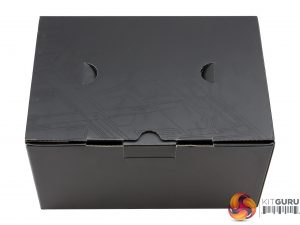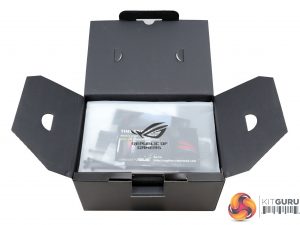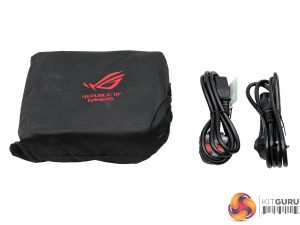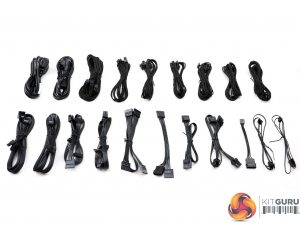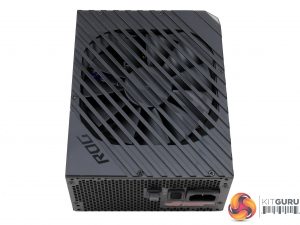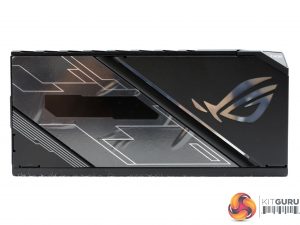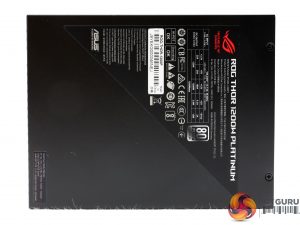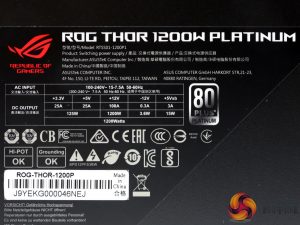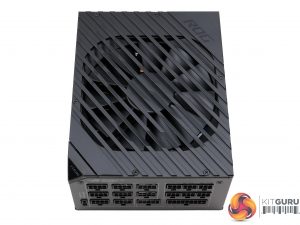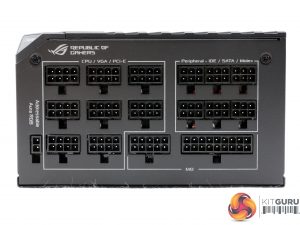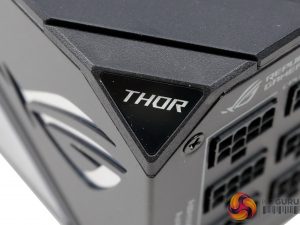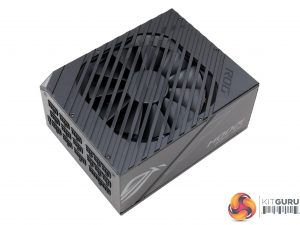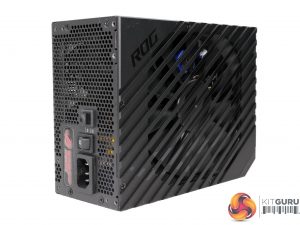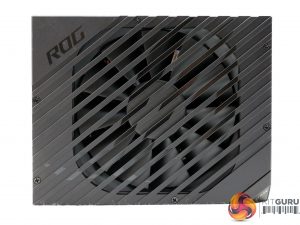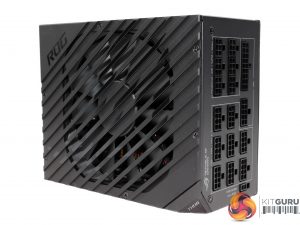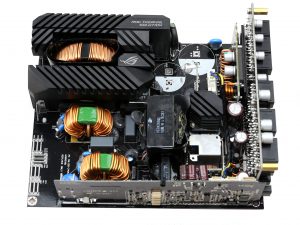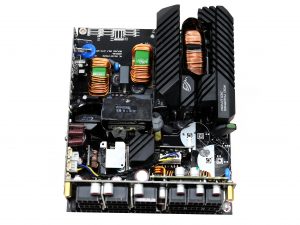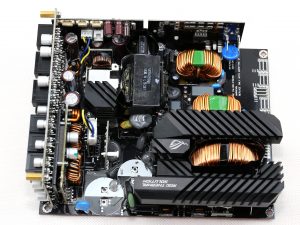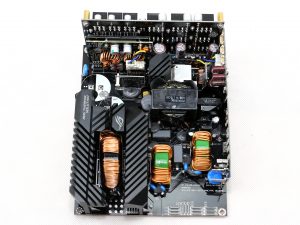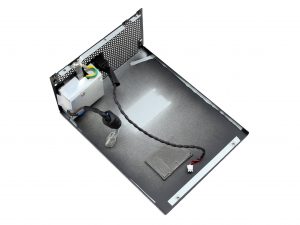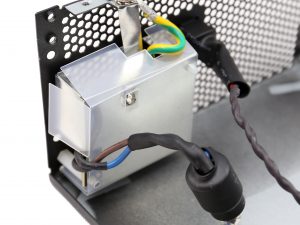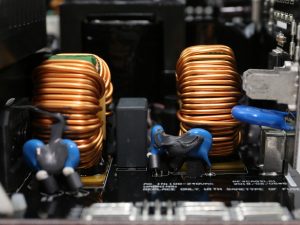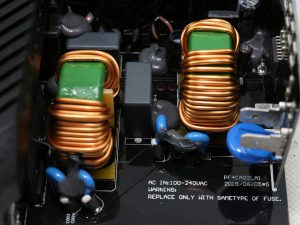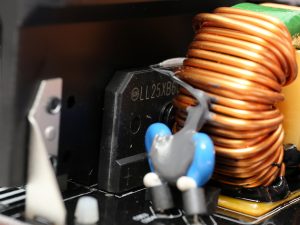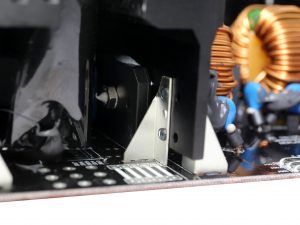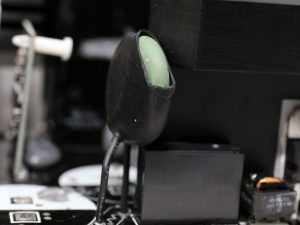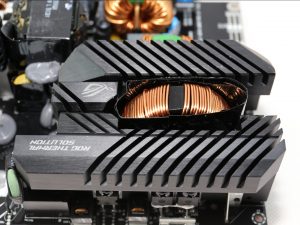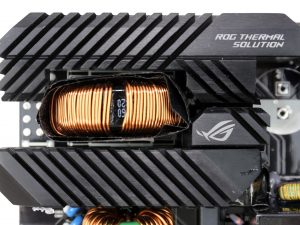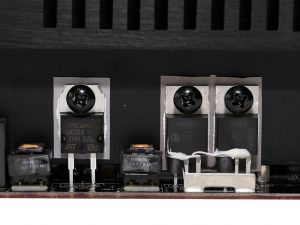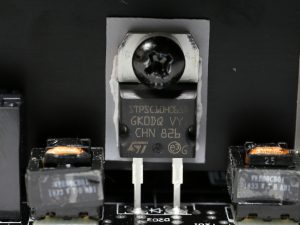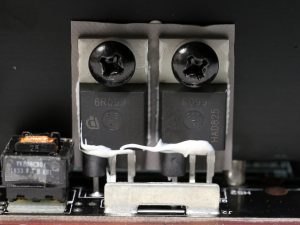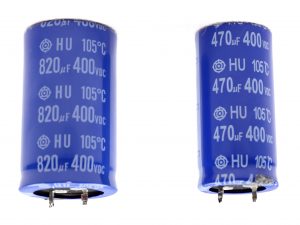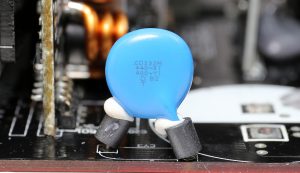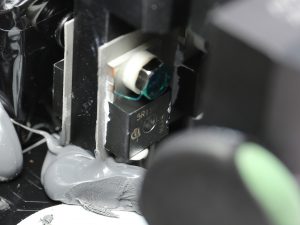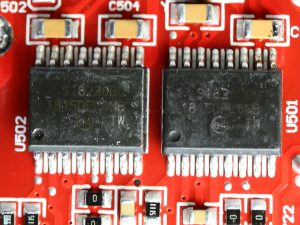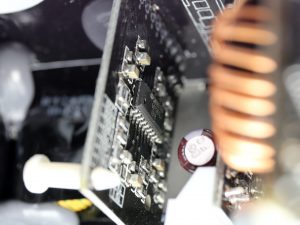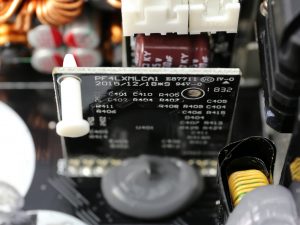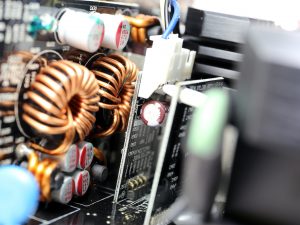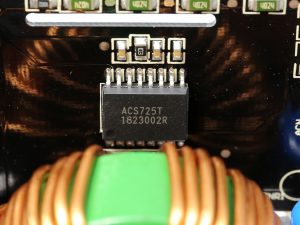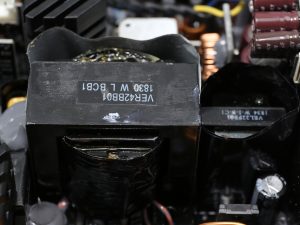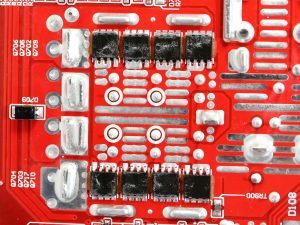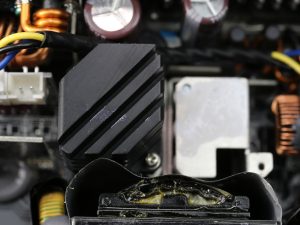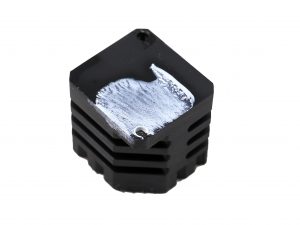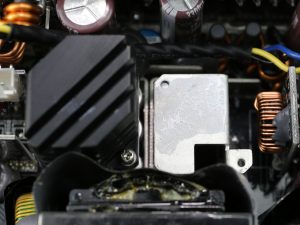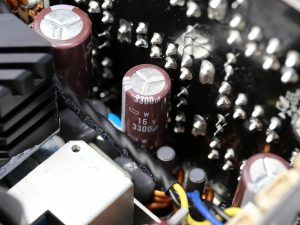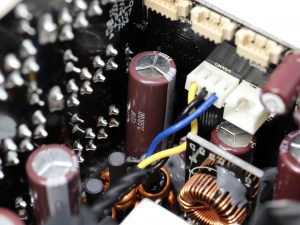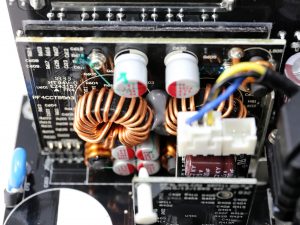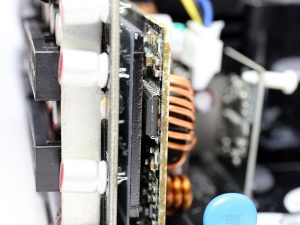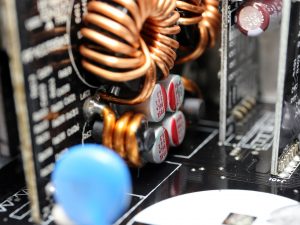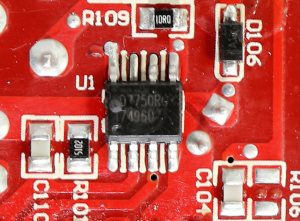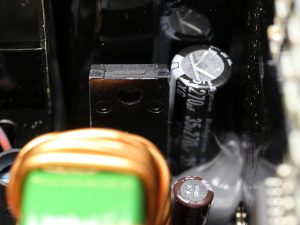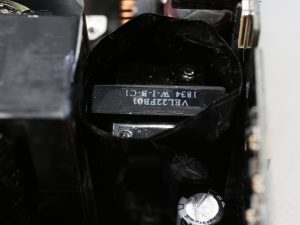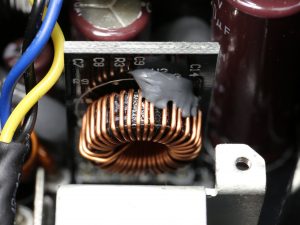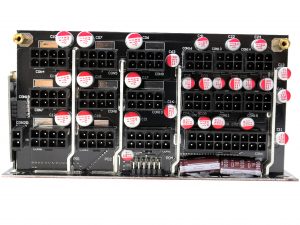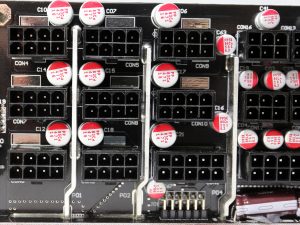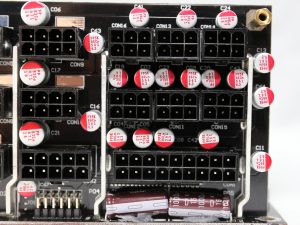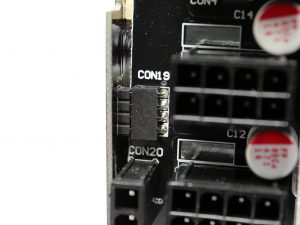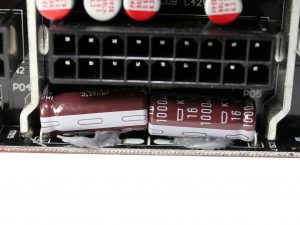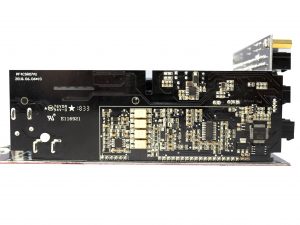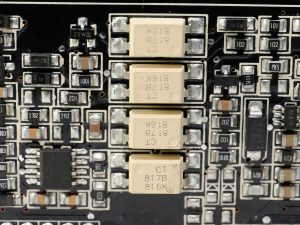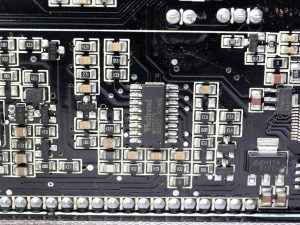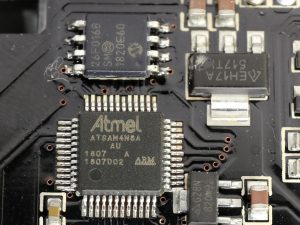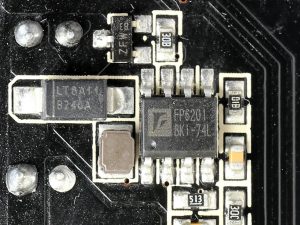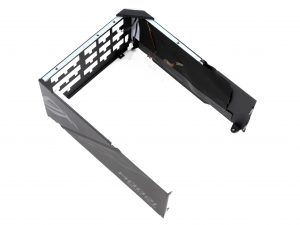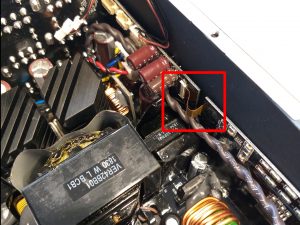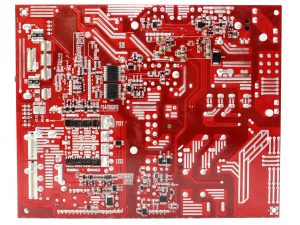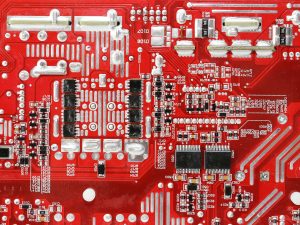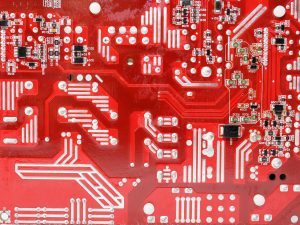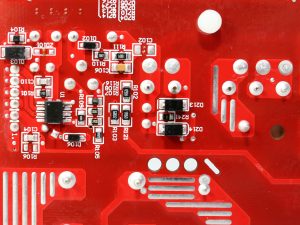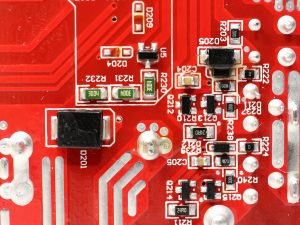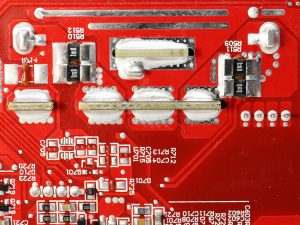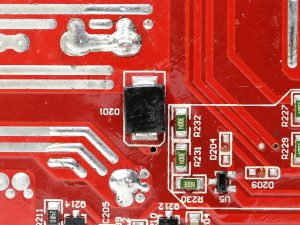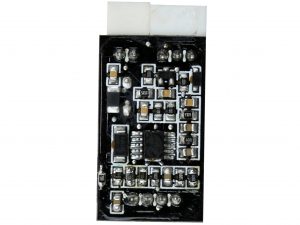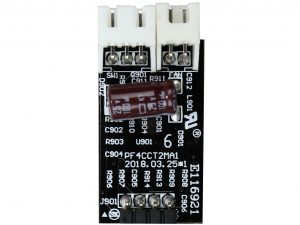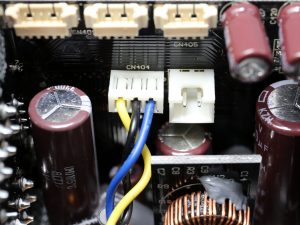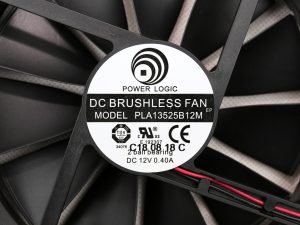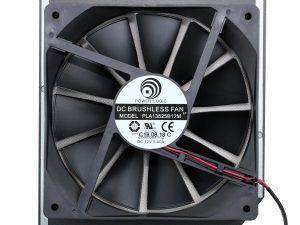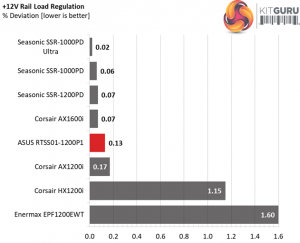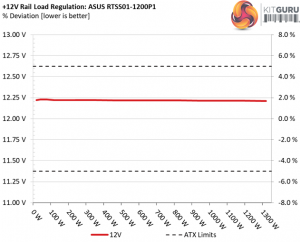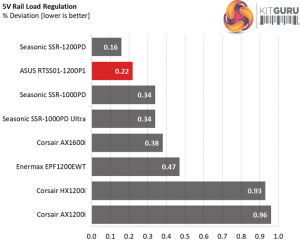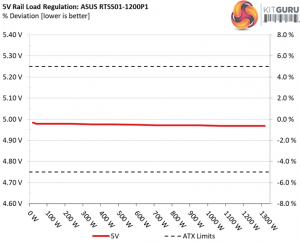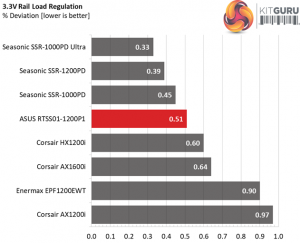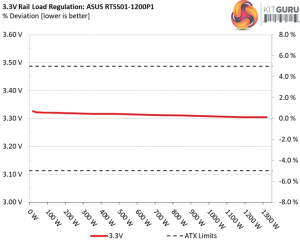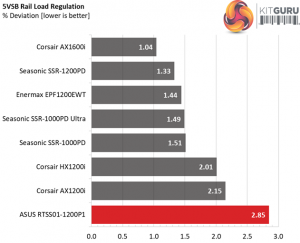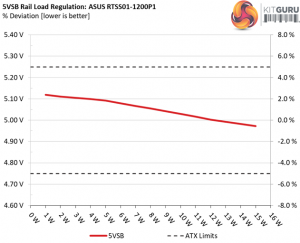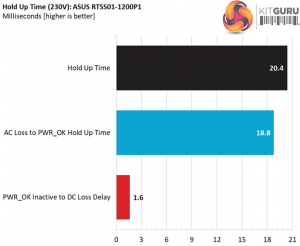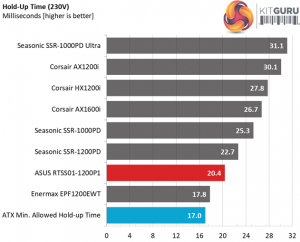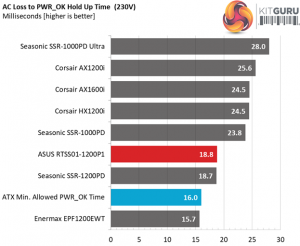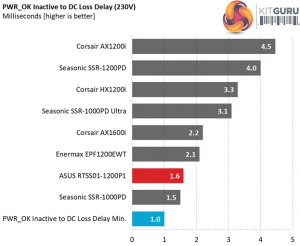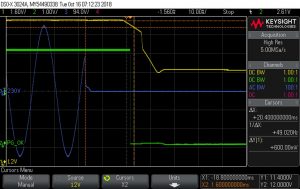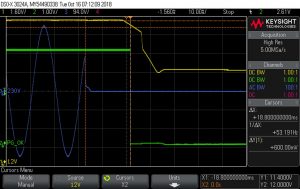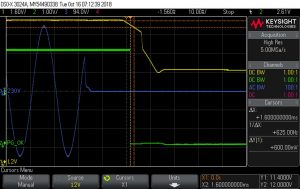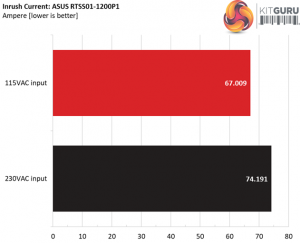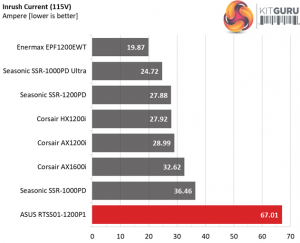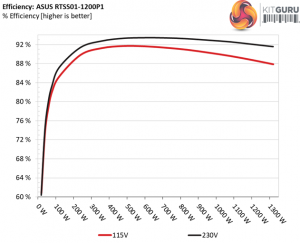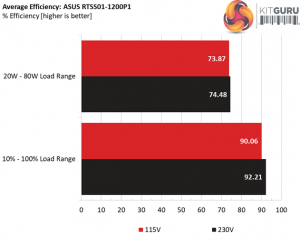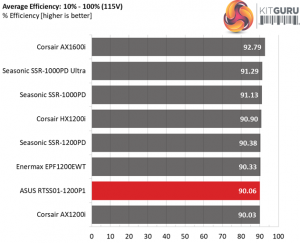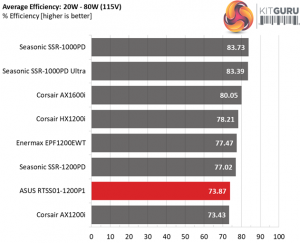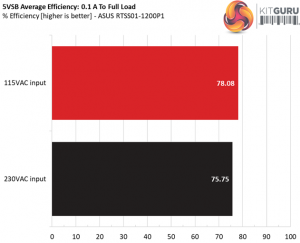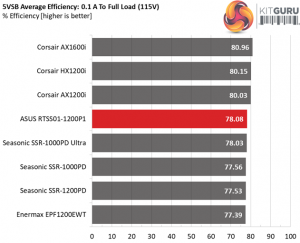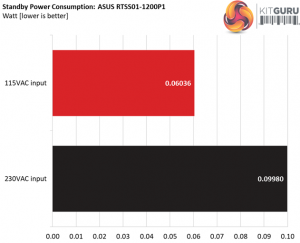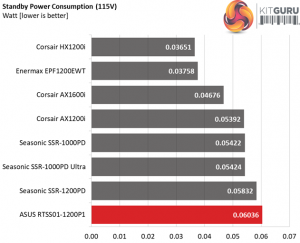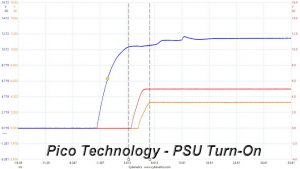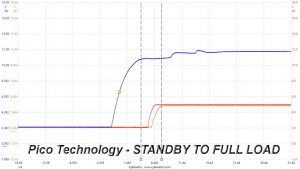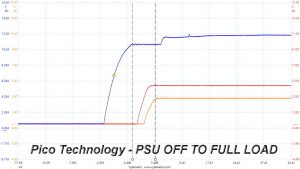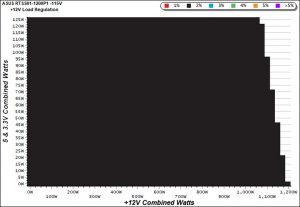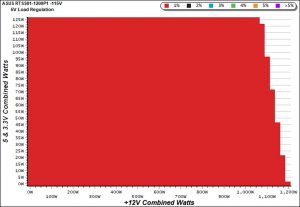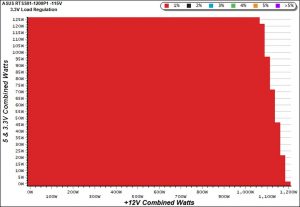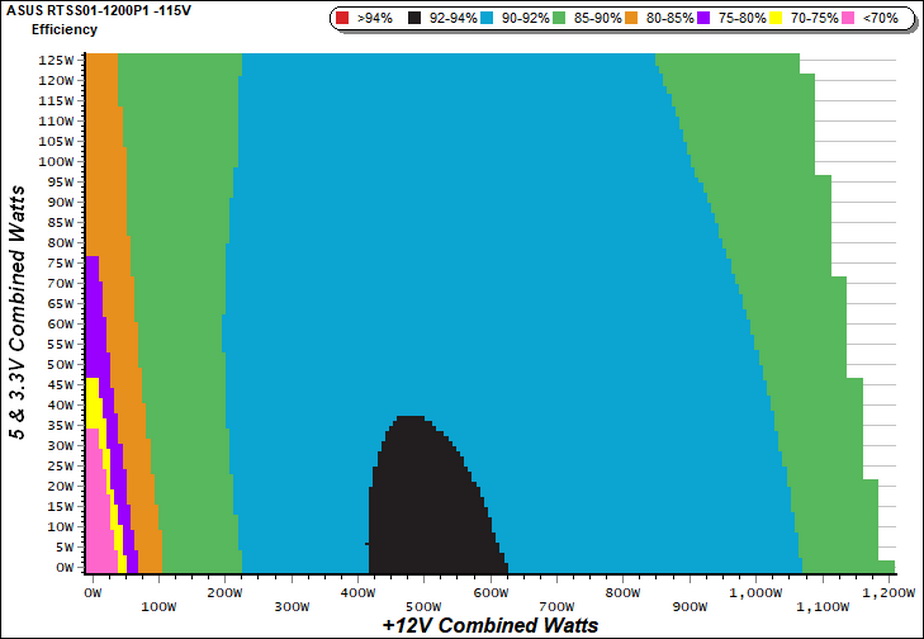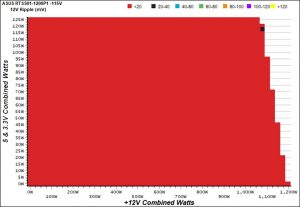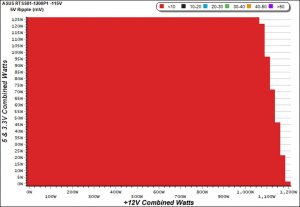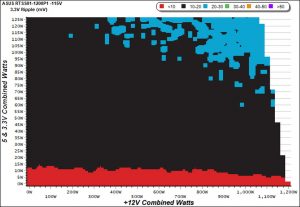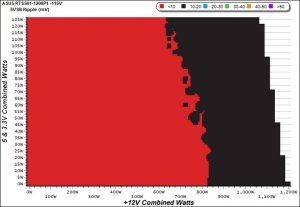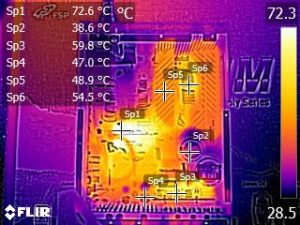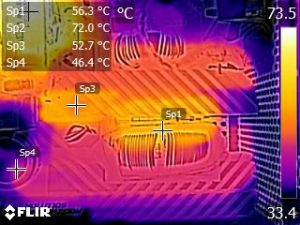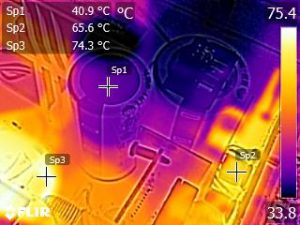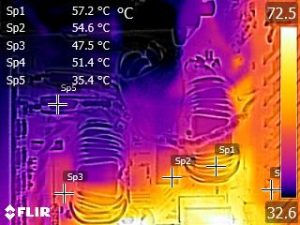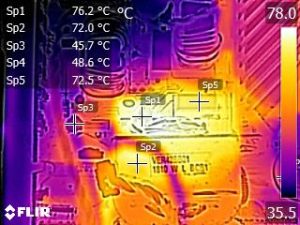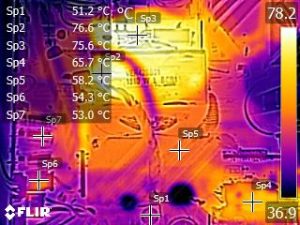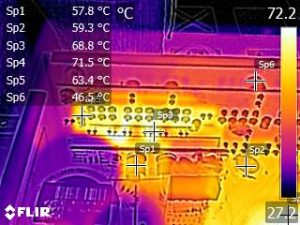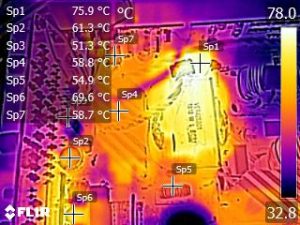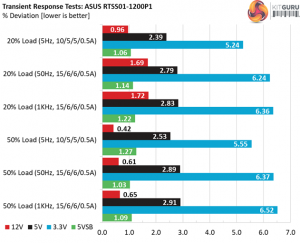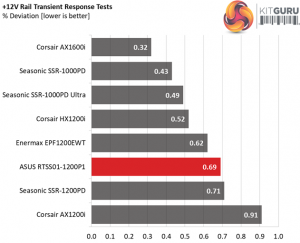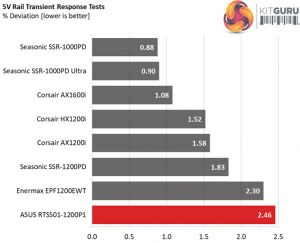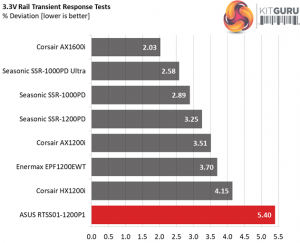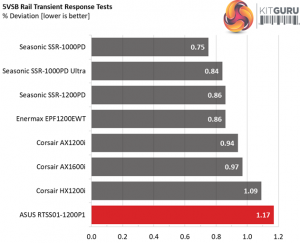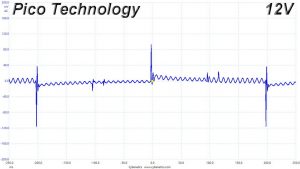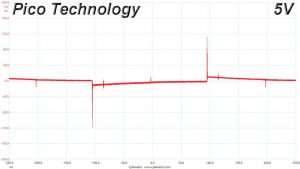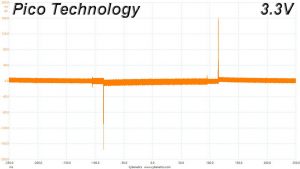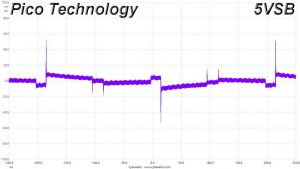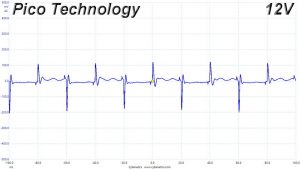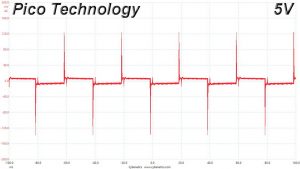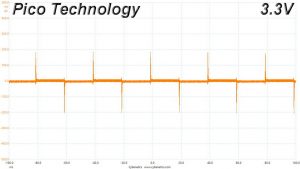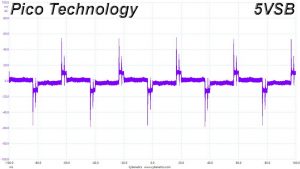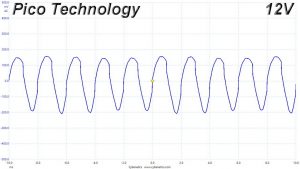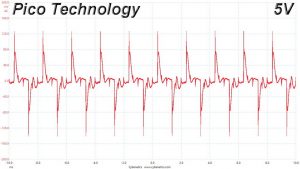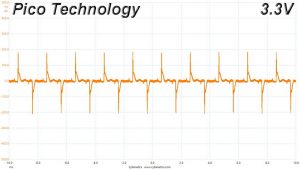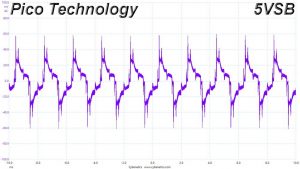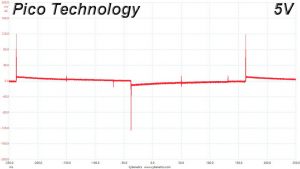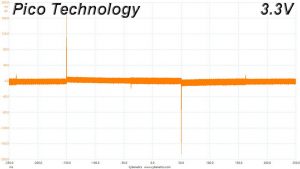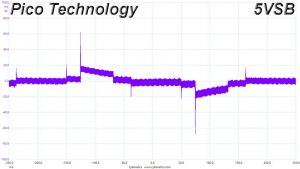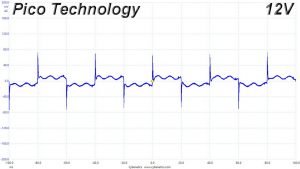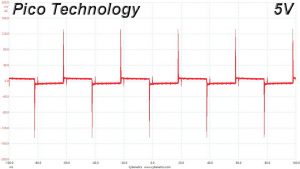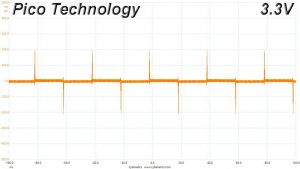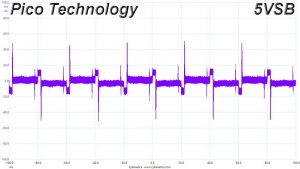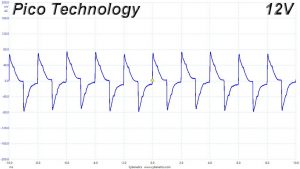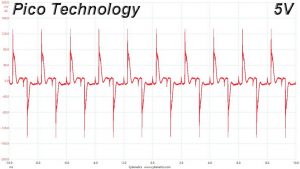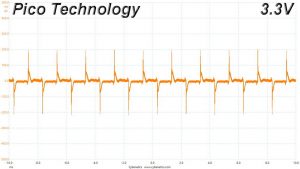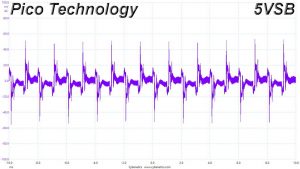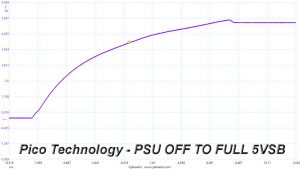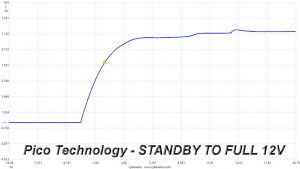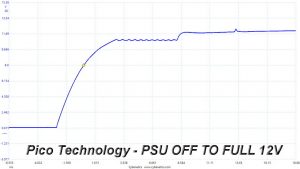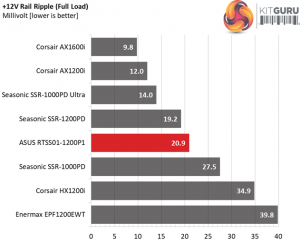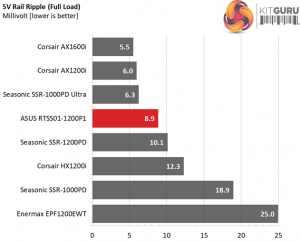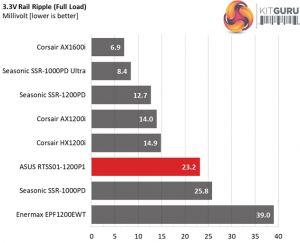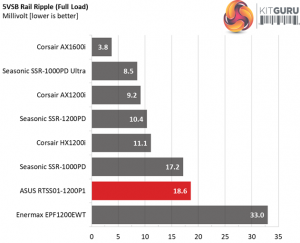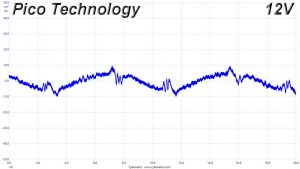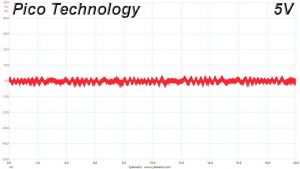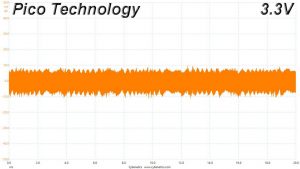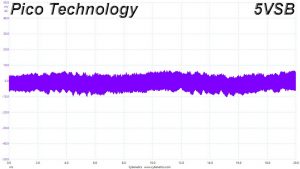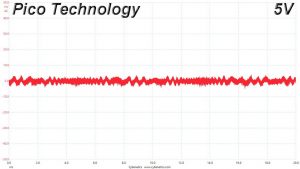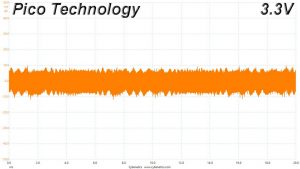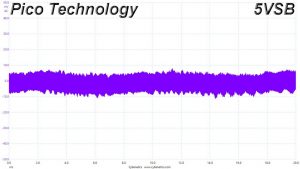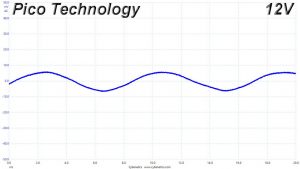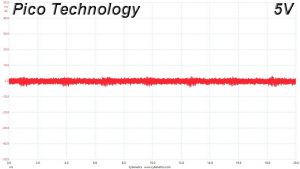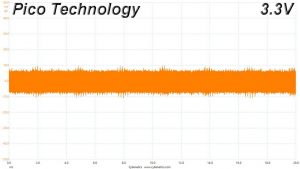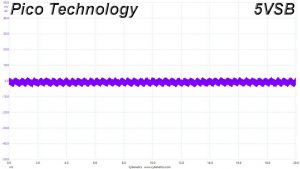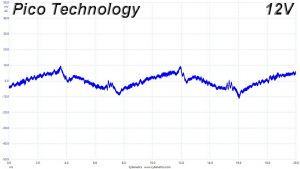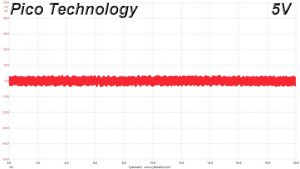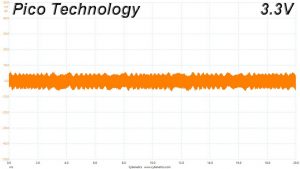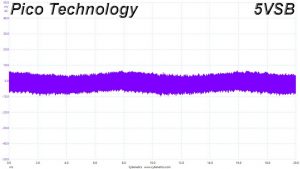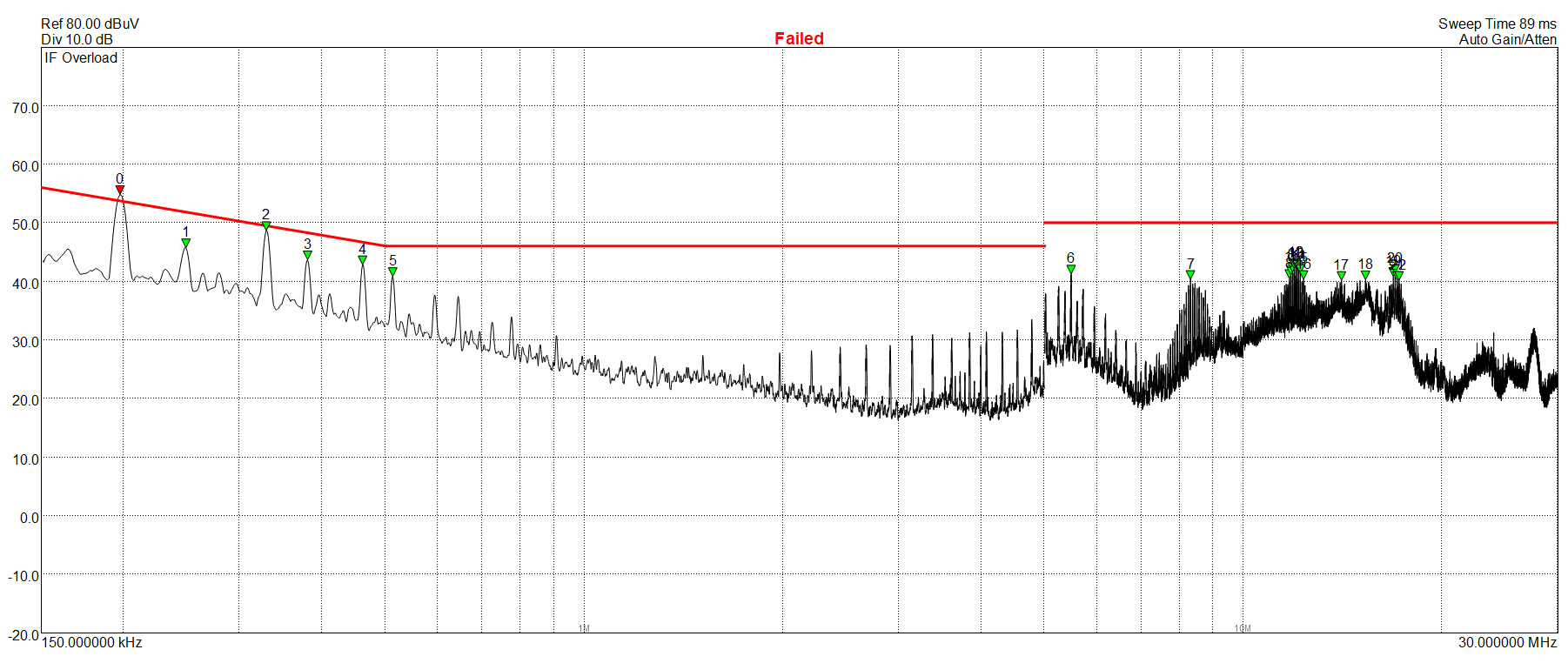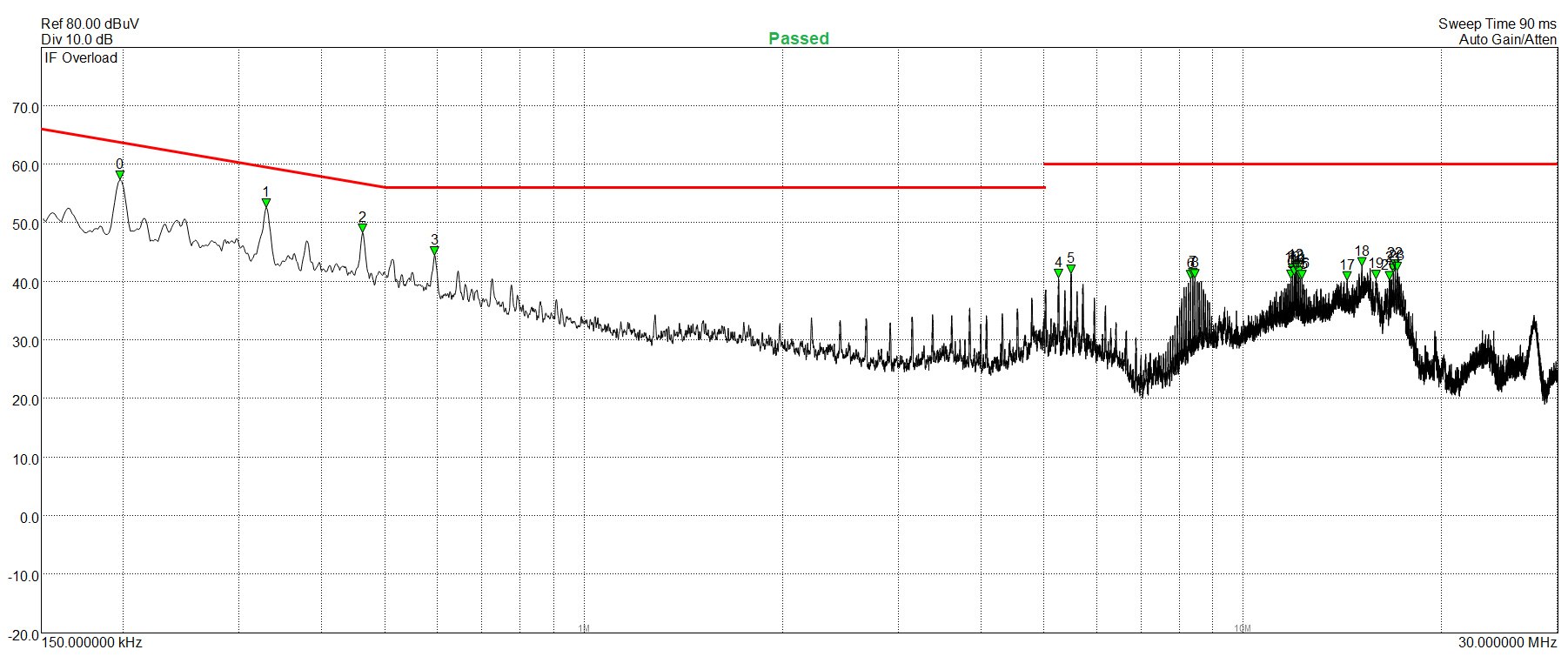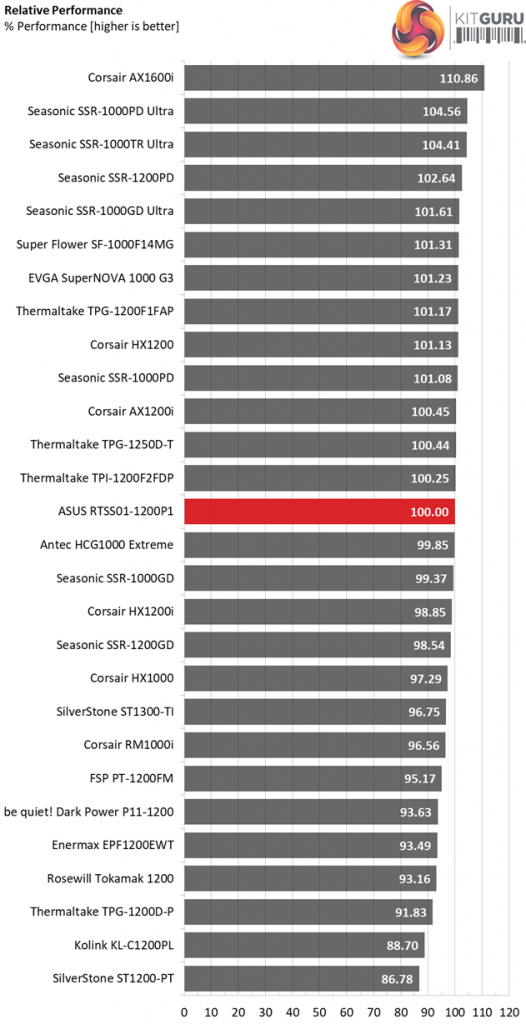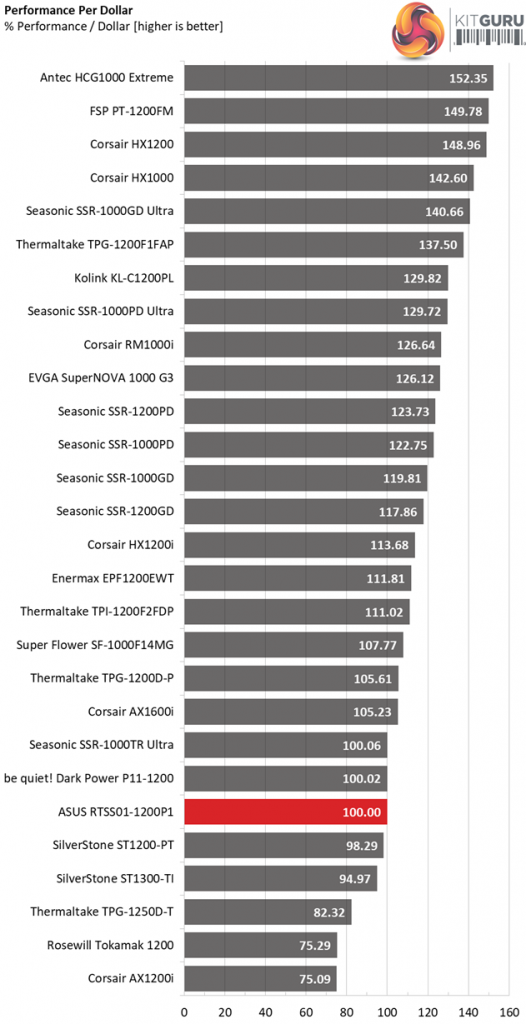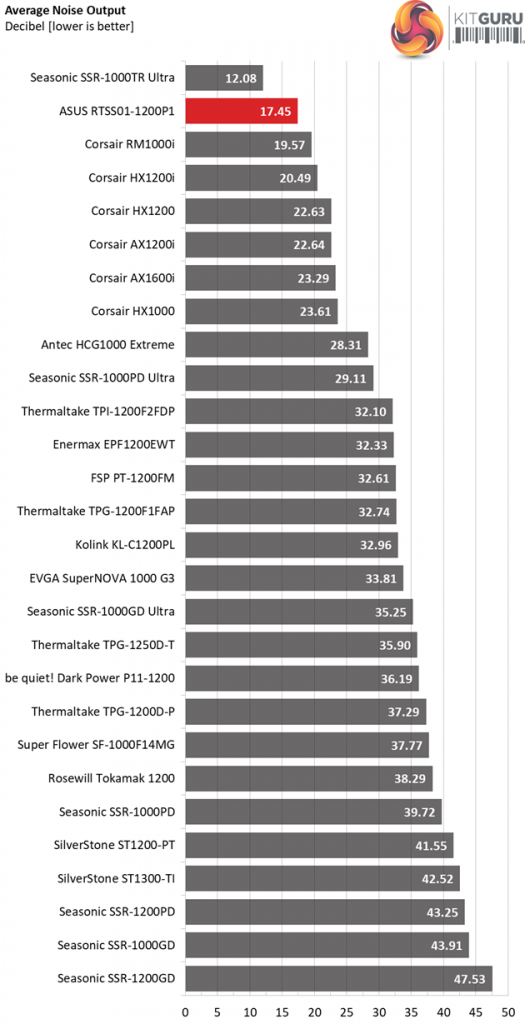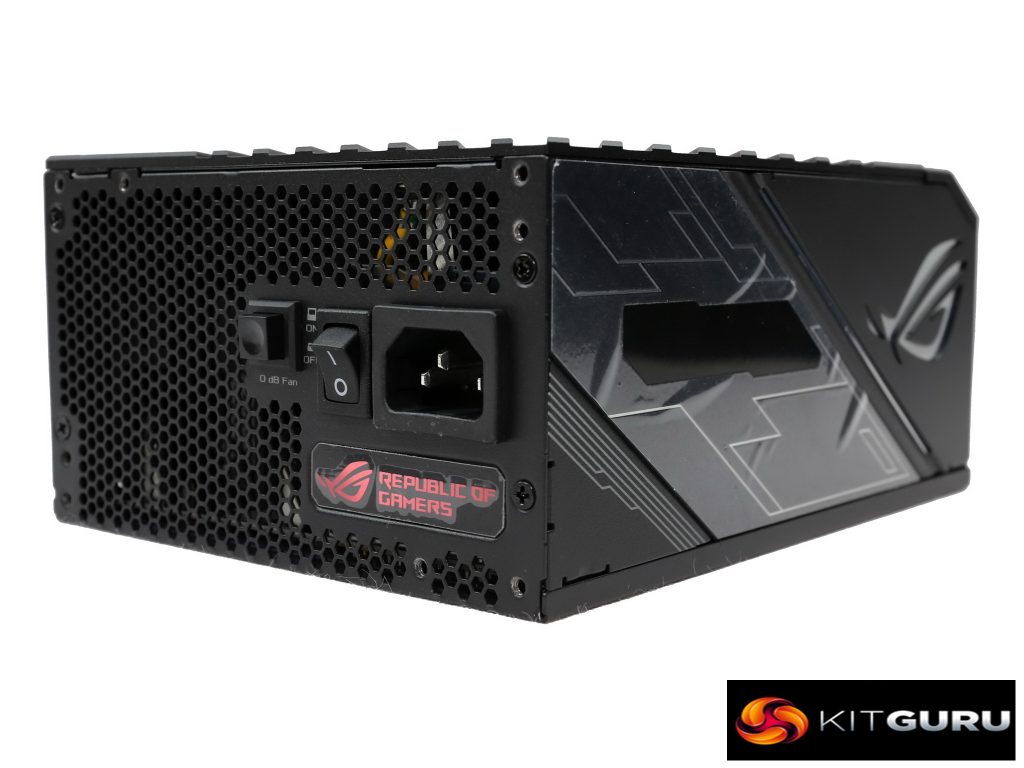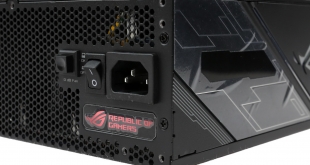
The moment has come – Asus have entered the PSU market for good, through its ROG sub-brand. Today we find out if the Thor unit has what it takes to go after marketing leading products such the Seasonic Prime 1200 Platinum and the much older, but still top-notch, Corsair AX1200i. With the decline of GPU mining, the market for power supplies is finally becoming more competitive, so we find out today if the new ASUS THOR 1200W has what it takes to attract an audience of buyers.
Everyone who reads KitGuru knows Asus. What probably most of you don't know is that this famous brand, responsible for some of the best mainboards ever made (I still remember my first Asus mainboard, a CUSL2 which made its debut almost 18 years ago) decided to enter the PSU market only very recently, through its highly prestigious ROG brand.
Since Asus didn't have the time, or simply didn't want to devote resources to build its own platform, it decided to cooperate with one of the best PSU manufacturers on the planet – SeaSonic by adopting its top-notch Prime platform. Asus is familiar with power supplies since its engineers have to deal with the design of VRMs (Voltage Regulation Modules) that equip its mainboards and graphics cards, however it was much safer to go with an already tested platform considered among the best that money can buy today.
‘THOR' is a pretty cool brand name for a power supply after all Thor was the Norse God of War – known for his lightning, storms, and strength. The ROG Thor series line currently consists of two units, with 1200W and 850W capacities available. In this review we will fully test the strongest member of the line, with model number RTSS01-1200P1.
The ROG Thor 1200P is based on a heavily modified version of the similar capacity Seasonic Prime Platinum model, featuring larger heatsinks internally and a micro-controller feeding real-time power draw data to an OLED screen installed on the unit's side. There is also addressable RGB lighting and Aura Sync compatibility, for those of you that want a fancy power supply this certainly looks to tick all the boxes!
Read our How We Test Power Supplies HERE
Specifications
| Manufacturer (OEM) | Seasonic |
| Max.DC Output | 1200W |
| Efficiency | 80 PLUS Platinum, ETA-A (88-91%) |
| Noise | LAMBDA-A+ (15-20 dB[A]) |
| Modular | ✓ (Fully) |
| Intel C6/C7 Power State Support |
✓ |
| Operating Temperature | 0 – 50°C |
| Over Voltage Protection | ✓ |
| Under Voltage Protection | ✓ |
| Over Power Protection | ✓ |
| Over Current (+12V) Protection | ✓ |
| Over Temperature Protection | ✓ |
| Short Circuit Protection | ✓ |
| Surge Protection | ✓ |
| Inrush Current Protection | ✓ |
| Fan Failure Protection | ✗ |
| No Load Operation | ✓ |
| Cooling | 135mm Double Ball Bearing Fan (PLA13525B12M) |
| Semi-Passive Operation | ✓ (selectable) |
| Dimensions (W x H x D) | 152 x 88 x 192mm |
| Weight | 2.37 kg (5.22 lb) |
| Form Factor | ATX12V v2.4, EPS 2.92 |
| Warranty | 10 Years |
The Thor unit is 80 PLUS Platinum and ETA-A certified by Cybenetics. In the noise section it scores a LAMBDA-A+ rating, which is great for a 1200W power supply. The same capacity Seasonic Prime model has a much higher overall noise output (LAMBDA-S, 43.25 dB[A]). Apparently the new cooling system that Asus utilized has done a marvelous job!
The max operating temperature is 50°C, however it is not clear whether the Thor 1200P is able to deliver its full power continuously at such a high temperature. Seasonic derates its SSR-1200PD model to 80% of its max-rated-power at 50°C, for continuous load delivery, stating that only at 40°C the unit is able for continuous full load delivery.
The cooling duties are handled by a double ball-bearing fan, which will be able to cope better under tough conditions than a fluid dynamic bearing fan. It is impressive to see such low noise output with a DBB fan, which is more noisy compared to a similar spec FDB. Finally, the provided warranty is very long at ten years, while the PSU's dimensions are quite large with 192mm length. This is 20mm more than the SSR-1200PD.
Power Specifications
| Rail | 3.3V | 5V | 12V | 5VSB | -12V | |
| Max. Power | Amps | 25 | 25 | 100 | 3 | 0.3 |
| Watts | 125 | 1200 | 15 | 3.6 | ||
| Total Max. Power (W) | 1200 | |||||
The minor rails are strong and the single +12V rail can deliver up to 100 Amps if/when needed. The 5VSB rail has 15W capacity and in real life it can deliver much more, without sweating.
Brands tend to keep the official capacity of this rail low though, just to be safe since under high loads its components will get quite hot; remember that the 5VSB rail operates with the PSU in standby, hence the cooling fan is not in operation.
Cables & Connectors
| Modular Cables | ||||
| Description | Cable Count | Connector Count (Total) | Gauge | In Cable Capacitors |
|---|---|---|---|---|
| ATX connector 20+4 pin (610mm) | 1 | 1 | 18-20AWG | No |
| 4+4 pin EPS12V (650mm) | 2 | 2 | 18AWG | No |
| 6+2 pin PCIe (680mm) | 4 | 4 | 18AWG | No |
| 6+2 pin PCIe (680mm+70mm) | 2 | 4 | 18AWG | No |
| SATA (350mm+150mm+150mm+150mm) | 1 | 4 | 18AWG | No |
| SATA (400mm+115mm+115mm+115mm) | 2 | 8 | 18AWG | No |
| 4-pin Molex to 2x SATA (150mm) | 1 | 2 | 18AWG | No |
| 4-pin Molex (350mm+120mm) | 1 | 2 | 18AWG | No |
| 4-pin Molex (450mm+120mm+120mm) | 1 | 3 | 18AWG | No |
| FDD Adapter (+105mm) | 1 | 1 | 22AWG | No |
| RGB Cable (800mm) | 1 | 1 | 22AWG | No |
| RGB Sync Cable (800mm) | 1 | 1 | 24AWG | No |
| AC Power Cord Type (1380mm) | 1 | 1 | 18AWG | – |
A great amount of cables and connectors equips the Thor unit, including two EPS and eight PCIe connectors. It is nice to also see four dedicated PCIe connectors, meaning that each of them is installed on its own cable for lower voltage drops. If you plan to highly overclock your graphics cards and install “only” a pair, then those cables should be preferred.
The number of SATA connectors is adequate and one of the cables provide large enough distance between the connectors, while the other two are ideal for situations where the drives are installed next to each other.
The SATA adapter with the pair of SATA connectors supports SATA 3.3-based drives. This means that in this cable the 3.3V rail is absent from the SATA connectors, since it doesn't exist on the four-pin Molex connector which feeds them power.
The 4-pin Molex connectors are placed 120mm apart. It would be nice to see at least 150mm distance given that the components (e.g. case fans) that are fed from those connectors, are usually installed far away from each other.
The ATX along with both EPS and four PCIe connectors use individually sleeved wires, while all the rest use flat, ribbon style, cables. ROG also teamed up with CableMod to offer a 20% discount, for a limited time though, to the users that want something fancier. So if you want something even nicer than the provided cables, or if you require custom length cables, then you better hurry up.
Please be aware our power supply reviews use a gallery system, which can be sometimes stopped by ad blockers as a false positive – if you don't see images in this review, then disable your ad blocker to view all the images.
Packaging
The box uses a dark background and its front side, however the model description along with its capacity are highlighted. In the bottom left corner the three icons describe the Aura Sync, the ten-year warranty and the 80 PLUS Platinum efficiency.
It is a shame that the Cybenetics badges are missing, since they could help future buyers to check on this unit's output noise as well, besides the more accurate efficiency classification.
The model description is also provided on the sides of the box, while in the back side Asus mentions the most important features including the OLED display, the RGB lighting, the individually sleeved cables and the large heatsinks used at this unit's internals.
Contents
The contents are nicely arranged, with the PSU being installed in a smaller box featuring adequate protection at its internals.
Besides the user's manual the bundle includes zip ties, several Velcro straps, a ROG sticker, a set of fixing bolts and a number of cable combs which will help you arrange better the individually sleeved cables.
Exterior
The external design is nice and on top of that it is distinctive. We didn't expect a plain design from a ROG product. The only common part in this power supply is the front exhaust grille, which uses the typical honeycomb-design. Besides the power switch we also find a push button, for toggling on/off the semi-passive operation.
The OLED screen is installed on the side. The whole concept looks great, reminding us of a space craft console, thanks to the silver stickers.
The power specifications label is installed at the bottom side and among others it depicts the product's serial number.
The modular panel hosts seventeen sockets! Moreover, in the top-left corner is a “Thor' sign which is nicely lit by the RGB LEDs.
The dimensions are large, however the Thor unit looks nice and after all it is a 1.2kW power supply, clearly destined for large chassis (or bench tables).
|
General Data |
|
|
Manufacturer (OEM) |
Seasonic |
|
Platform Model |
Prime Ultra Platinum |
|
Primary Side |
|
|
Transient Filter |
6x Y caps, 3x X caps, 2x CM chokes, 1x MOV |
|
Inrush Protection |
NTC Thermistor & Relay |
|
Bridge Rectifier(s) |
2x Shindengen LL25XB60C (600V, 25A @ 105°C) |
|
APFC MOSFETS |
2x Infineon IPP60R099CP (650V, 19A @ 100°C, 0.099 Ohm) |
|
APFC Boost Diode |
1x STMicroelectronics STPSC10H065D (650V, 10A @ 135°C) |
|
Hold-up Cap(s) |
Hitachi (400V, 1x 820uF & 1x 470uF, 2000h @ 105°C, HU) |
|
Main Switchers |
4x Infineon IPP50R199CP (550V, 11A @ 100°C, 0.199 Ohm) |
|
Drivers For Main Switchers |
2x Silicon Labs Si8230BD |
|
APFC Controller |
ON Semiconductor NPC1654 |
|
Current Sensor IC |
Allegro ACS725T |
|
Switching Controller |
Champion CM69016X |
|
Topology |
Primary side: Full-Bridge & LLC Resonant Converter |
|
Secondary Side |
|
|
+12V MOSFETS |
8x Nexperia PSMN1R0-40YLD (40V, 200A @ 100°C, 1.4mOhm) |
|
5V & 3.3V |
DC-DC Converters: 6x Infineon BSC0906NS |
|
Filtering Capacitors |
Electrolytics: Chemi-Con |
|
Micro Controller |
Microchip ATmega8A |
|
Flash Memory |
Microchip SST26VF016B |
|
Supervisor IC |
|
|
Fan Model |
Power Logic PLA13525B12M (135mm, 12V, 0.40A, 2000 RPM, 111.1 CFM, 41.6 dB[A], Double Ball Bearing) |
|
5VSB Circuit |
|
|
Buck Converter |
Leadtrend LD7750R |
|
Rectifier |
STMicroelectronics STU6N65K3 (650V, 3A @ 100°C, 1.3Ohm) |
|
-12V Circuit |
|
|
Buck Converter |
Lite-On LSP5523 (3A max output current ) |
Asus took Seasonic's Prime Platinum platform and made lots of changes to make it compatible with its needs. For starters an OLED screen was installed to depict the unit's power draw. The information provided to this screen is processed by a micro-controller.
Moreover, the platform features addressable RGB lighting which can be controlled by a compatible mainboard. The most significant changes are though the much larger heatsinks and the double ball-bearing fan. The new heatsinks allow for a much more relaxed fan profile while the DBB fan is able to cope with extra tough conditions, which cut a FDB fan's lifetime short.
The build quality is high and the airflow seems unobstructed, since all heavy power transfers to the various parts of the board are conducted through the PCB and not through wires. Only the fan's circuit uses some wires, without a significant impact on the airflow though.
Most of the filtering is handled by polymer caps, with the few electrolytic caps providing the necessary capacity in the secondary side, to cope with sudden (transient) load changes.
Obviously building a new platform from scratch wasn't what Asus had in mind since it would require time and resources, so the main goal was to provide all extra features without changing the main core of the Prime platform. Whether the result was successful or not, we will see it after we finish all testing.
The first part of the transient filter is at the AC receptacle, as usual. It includes two X and two Y caps. It continues on the main PCB with a single X and two Y caps. The second X cap shown in the photos belongs to the LLC resonant converter. There is also a MOV responsible for protection against surges coming from the mains grid.
The bridge rectifiers are two powerful Shindengen LL25XB60C. Combined they can handle up to 50 Amps of current.
There is a NTC thermistor with a bypass relay, which protect the platform from large inrush currents. As it seems a larger NTC thermistor is required, since we measure quite high inrush currents during the PSU's startup.
The APFC converter uses two Infineon IPP60R099CP FETs and a single STMicroelectronics STPSC10H065D boost diode. The bulk caps are provided by Hitachi and their combined capacity is large enough to offer a longer than 20ms hold-up time.
The APFC controller is a NPC1654, installed on a small daughter-board which is covered my Mylar tape.
A lonely Y cap, installed right next to the APFC converter's bulk caps.
The main FETs, four Infineon IPP50R199CP, are configured in a full-bridge topology. An LLC resonant is also utilized to restrict switching losses. The FM/PWM controller is a Champion CM69016X.
The latter is hosted on a vertical-board which is right behind the fan control board. Finally, the driver ICs of the main switching FETs are a pair of Silicon Labs Si8230BD.
The current sensor IC is a Allegro ACS725T.
The main transformer resides next to a smaller transformer, which is used by the 5VSB circuit.
The +12V rail is rectified by eight Nexperia PSMN1R0-40YLD FETs, installed at the solder side of the board. There are two heatsinks right above them, on the business side of the PCB, which assist in their cooling.
Those heatsinks consist of two parts each and thankfully there is thermal paste between them.
The ripple filtering on the secondary side is done by a combination of electrolytic and polymer caps. The electrolytic caps are provided by Chemi-Con (W, KY and KYB lines) while the polymer caps are by FPCAP and Chemi-Con.
This board holds both DC-DC converters, responsible for the generation of the minor rails.
The 5VSB circuit uses a Leadtrend LD7750R buck converter, installed on the solder side of the main PCB, while the rectifier is a STMicroelectronics STU6N65K3 SBR.
There is a dedicated rectifier for the -12V rail, which is a Lite-On LSP5523. It is installed onto a small board, right next to one of the +12V heatsinks.
At the front side of the modular PCB a large number of polymer caps along with a pair of electrolytic Chemi-Cons (KY series) are used for ripple filtering purposes.
A large board, residing in the secondary side, holds the supervisor IC (Weltrend WT7527V). We also find an AS393M dual voltage comparator, residing in the primary side, which most likely provides data to the supervisor IC which is located in the secondary side. On the same board we also find a Microchip ATmega8A micro-controller and its flash memory (Microchip SST26VF016B).
We also found a FP6201 switching boost regulator on this board, along with a LT8A diode. Those two parts are most likely used to provide power to the PSU's OLED screen and/or some of the RGB lighting.
The OLED screen is installed on the chassis and it is connected to the platform through a small ribbon cable.
The soldering quality on the main PCB is quite good.
The fan control board is connected to the board that holds the micro-controller. The cooling fan uses a double ball-bearing and its model number is PLA13525B12M. It measures 135mm across and it is very quiet, because of the highly relaxed speed profile that controls it.
To learn more about our PSU tests and methodology, please check out How We Test Power Supply Units.
Primary Rails And 5VSB Load Regulation
Load Regulation testing is detailed here.
Hold-Up Time
Our hold-up time tests are described in detail here.
The oscilloscope screenshots that we took during the hold-up time measurements:
The hold-up time is long and the power ok signal is accurate.
Inrush Current
For details on our inrush current testing, please click here.
The inrush current with both 230V and 115V is higher than the competition.
Load Regulation And Efficiency Measurements
The first set of tests reveals the stability of the voltage rails and the unit’s efficiency. The applied load equals (approximately) 10 to 110 percent of the power supplies maximum load in increments of 10 percentage points.
We conducted two additional tests.
During the first, we stressed the two minor rails (5V and 3.3V) with a high load, while the load at +12V was only 0.1A. This test reveals whether a power supply is compatible with Intel’s C6/C7 sleep states or not. In the second test, we determined the maximum load the +12V rail could handle with minimal load on the minor rails.
| Test # | 12V | 5V | 3.3V | 5VSB | DC/AC (Watts) | Efficiency | Fan Speed (RPM) | PSU Noise (dB[A]) | Temps (In/Out) | PF/AC Volts |
| 1 | 8.056A | 2.008A | 1.985A | 0.982A | 120.059 | 85.305% | 570 | 11.2 | 40.14°C | 0.960 |
| 12.223V | 4.979V | 3.321V | 5.092V | 140.741 (*143) | 44.56°C | 115.05V | ||||
| 2 | 17.091A | 3.012A | 2.982A | 1.181A | 239.741 | 89.842% | 572 | 11.3 | 40.61°C | 0.977 |
| 12.220V | 4.978V | 3.319V | 5.079V | 266.848 (*264) | 45.62°C | 115.05V | ||||
| 3 | 26.451A | 3.520A | 3.466A | 1.382A | 359.246 | 91.254% | 576 | 11.5 | 41.23°C | 0.985 |
| 12.220V | 4.976V | 3.317V | 5.067V | 393.679 (*389) | 47.47°C | 115.04V | ||||
| 4 | 35.883A | 4.021A | 3.978A | 1.583A | 479.653 | 91.693% | 578 | 11.6 | 41.68°C | 0.990 |
| 12.219V | 4.975V | 3.316V | 5.055V | 523.108 (*519) | 48.56°C | 115.04V | ||||
| 5 | 44.956A | 5.030A | 4.978A | 1.785A | 599.789 | 91.635% | 615 | 12.9 | 42.20°C | 0.993 |
| 12.218V | 4.974V | 3.314V | 5.042V | 654.538 (*651) | 50.37°C | 115.04V | ||||
| 6 | 54.025A | 6.033A | 5.977A | 1.989A | 719.926 | 91.327% | 695 | 15.9 | 42.91°C | 0.995 |
| 12.219V | 4.972V | 3.312V | 5.029V | 788.297 (*784) | 51.91°C | 115.03V | ||||
| 7 | 63.071A | 7.042A | 6.977A | 2.193A | 839.654 | 90.894% | 787 | 19.1 | 43.22°C | 0.995 |
| 12.217V | 4.972V | 3.311V | 5.017V | 923.771 (*918) | 53.05°C | 115.03V | ||||
| 8 | 72.179A | 8.050A | 7.978A | 2.399A | 960.157 | 90.276% | 870 | 23.0 | 43.89°C | 0.996 |
| 12.216V | 4.971V | 3.309V | 5.003V | 1063.585 (*1054) | 54.32°C | 115.03V | ||||
| 9 | 81.619A | 8.554A | 8.467A | 2.403A | 1079.486 | 89.594% | 970 | 26.0 | 44.41°C | 0.996 |
| 12.215V | 4.969V | 3.307V | 4.996V | 1204.870 (*1190) | 55.29°C | 115.02V | ||||
| 10 | 90.897A | 9.058A | 8.985A | 3.017A | 1199.915 | 88.767% | 1520 | 39.8 | 45.90°C | 0.996 |
| 12.214V | 4.968V | 3.305V | 4.973V | 1351.760 (*1330) | 57.57°C | 115.02V | ||||
| 11 | 100.740A | 9.062A | 8.989A | 3.021A | 1319.960 | 87.861% | 1860 | 46.4 | 46.59°C | 0.996 |
| 12.212V | 4.968V | 3.304V | 4.966V | 1502.330 (*1471) | 59.17°C | 115.01V | ||||
| CL1 | 0.146A | 15.002A | 14.999A | 0.000A | 126.173 | 82.849% | 785 | 19.1 | 42.54°C | 0.966 |
| 12.236V | 4.974V | 3.318V | 5.105V | 152.293 (*155) | 50.26°C | 115.05V | ||||
| CL2 | 100.009A | 1.002A | 1.000A | 1.000A | 1234.522 | 88.837% | 1550 | 40.0 | 45.87°C | 0.996 |
| 12.211V | 4.969V | 3.305V | 5.029V | 1389.651 (*1364) | 56.83°C | 115.02V |
*Readings acquired by the PSU's OLED screen.
The load regulation on all rails but the 5VSB one is super tight. Moreover, the fan spins at very low speeds under extreme-fully tough conditions so even with full load at 46°C, the unit's noise doesn't exceed 40 dB(A). This is amazing to say the least!
Thanks to the large heatsinks there is no need for increased airflow during high loads at increased operating temperatures. The noise output gap between the Seasonic SSR-1200PD and the Asus offering is huge! Kudos to both Asus and Seasonic for creating such a quiet 1200W PSU.
This is a definitely 80 PLUS Platinum unit since even at the very high temperatures that we test, it is very close to the required levels that this standard sets. We should remind, for another one time, that the 80 PLUS organization tests at a very low ambient (23+-5°C) while we perform our tests at up to 20°C higher temperatures. The hotter the unit's internals, the largest the effect in its efficiency. Only the bridge rectifiers benefit from high operating temperatures, because their diodes have lower voltage drops as their operating temperature increases.
Finally, if you take a look at the DC/AC Watts column in the table above, you will notice that the AC Watt readings from the PSU's OLED screen are close to the real ones. Only in very high loads, tests #10 and #11, the deviation is notable.
Efficiency
Our efficiency testing procedure is detailed here.
Using results from the previous page, we plotted a chart showing the PSU's efficiency at low loads, and loads from 10 to 110 percent of its maximum-rated capacity.
Compared to similar spec platforms the Asus unit stays behind. With normal loads the difference is minimal, however with light loads it is significant. Obviously the OLED screen and the extra power required by the micro-controller, are the main culprits for this.
Efficiency At Low Loads
In the following tests, we measure the RTSS01-1200P1's efficiency at loads significantly lower than 10 percent of its maximum capacity (the lowest load the 80 PLUS standard measures). The loads we dial are 20, 40, 60, and 80W. This is important for representing when a PC is idle, with power-saving features turned on.
| Test # | 12V | 5V | 3.3V | 5VSB | DC/AC (Watts) | Efficiency | Fan Speed (RPM) | PSU Noise (dB[A]) | PF/AC Volts |
| 1 | 1.185A | 0.502A | 0.480A | 0.196A | 19.583 | 60.811% | 0 | <6.0 | 0.816 |
| 12.220V | 4.984V | 3.326V | 5.119V | 32.203 (*33) | 115.06V | ||||
| 2 | 2.425A | 1.002A | 0.993A | 0.391A | 39.940 | 73.598% | 0 | <6.0 | 0.889 |
| 12.228V | 4.979V | 3.322V | 5.111V | 54.268(*53) | 115.05V | ||||
| 3 | 3.603A | 1.507A | 1.473A | 5.105A | 59.461 | 78.873% | 0 | <6.0 | 0.918 |
| 12.230V | 4.978V | 3.322V | 5.105V | 75.388 (*75) | 115.05V | ||||
| 4 | 4.845A | 2.011A | 1.985A | 0.785A | 79.851 | 82.182% | 567 | 11.1 | 0.943 |
| 12.228V | 4.978V | 3.321V | 5.099V | 97.164 (*96) | 115.05V |
*Readings acquired by the PSU's OLED screen. As you can see they are pretty close to the real ones.
The PSU operates in passive mode through out the first three tests and although no power is spent on the fan's operation, still the registered efficiency levels are low. We strongly believe that the OLED screen and its controller are to blame for the not so good efficiency results under light loads.
5VSB Efficiency
The ATX specification (revision 1.4), along with CEC, ErP Lot 3 2014 and ErP Lot 6 2010/2013, states that the 5VSB standby supply efficiency should be as high as possible, recommending 75 percent or higher with 550mA, 1A, and 1.5A of load.
The supply should also achieve higher than 75% efficiency at 5VSB under full load, or with 3A if its max current output on this rail is higher than 3A.
We take six measurements: one each at 100, 250, 550, 1000, and 1500mA, and one with the full load the 5VSB rail can handle.
| Test # | 5VSB | DC/AC (Watts) |
Efficiency | PF/AC Volts |
| 1 | 0.100A | 0.513 | 73.707% | 0.067 |
| 5.127V | 0.696 | 115.05V | ||
| 2 | 0.250A | 1.281 | 78.253% | 0.147 |
| 5.123V | 1.637 | 115.05V | ||
| 3 | 0.550A | 2.814 | 80.515% | 0.262 |
| 5.115V | 3.495 | 115.05V | ||
| 4 | 1.000A | 5.104 | 80.657% | 0.359 |
| 5.104V | 6.328 | 115.05V | ||
| 5 | 1.500A | 7.638 | 80.860% | 0.414 |
| 5.092V | 9.446 | 115.05V | ||
| 6 | 3.000A | 15.171 | 79.696% | 0.484 |
| 5.057V | 19.036 | 115.05V |
The 5VSB rail is highly efficient and only loses to CWT's and Flextronics' top implementations.
Power Consumption In Idle And Standby
In the table below, you’ll find the power consumption and voltage values of all rails (except -12V) when the PSU is idle (powered on, but without any load on its rails), and the power consumption when the unit is in standby mode (without any load, at 5VSB).
| Mode | 12V | 5V | 3.3V | 5VSB | Watts | PF/AC Volts |
| Idle | 12.198V | 4.994V | 3.330V | 5.129V | 12.838 | 0.586 |
| 115.1V | ||||||
| Standby | 0.060 | 0.006 | ||||
| 115.1V | ||||||
The vampire power levels are low, however the competition is super tough here.
Fan RPM, Delta Temperature, And Output Noise
Our mixed noise testing is described in detail here.
The first chart below illustrates the cooling fan's speed (in RPM), and the delta between input and output temperature. The results were obtained at 37°C (98.6°F) to 47°C (116.6°F) ambient temperature.
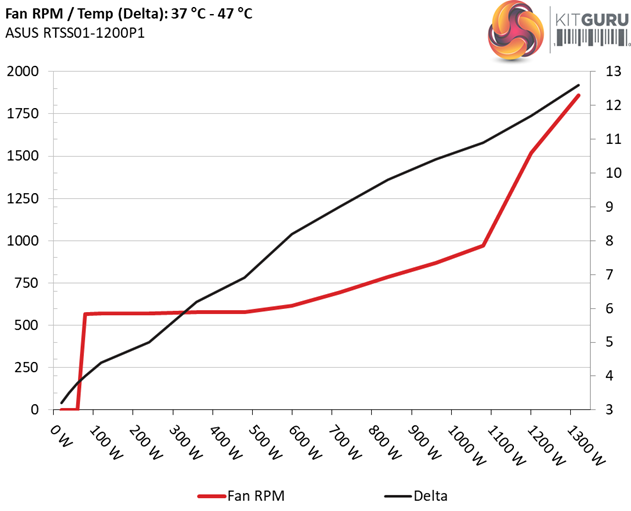
The next chart shows the cooling fan's speed (again, in RPM) and output noise. We measure acoustics from one meter away, inside a hemi-anechoic chamber. Background noise inside the chamber is below 6 dB(A) during testing (it's actually much lower, but our sound meter’s microphone hits its floor), and the results are obtained with the PSU operating at 37°C (98.6°F) to 47°C (116.6°F) ambient temperature.

The following graph illustrates the fan's output noise over the PSU's operating range. The same conditions of the above graph apply to our measurements, though the ambient temperature is between 30°C (86°F) to 32°C (89.6°F).
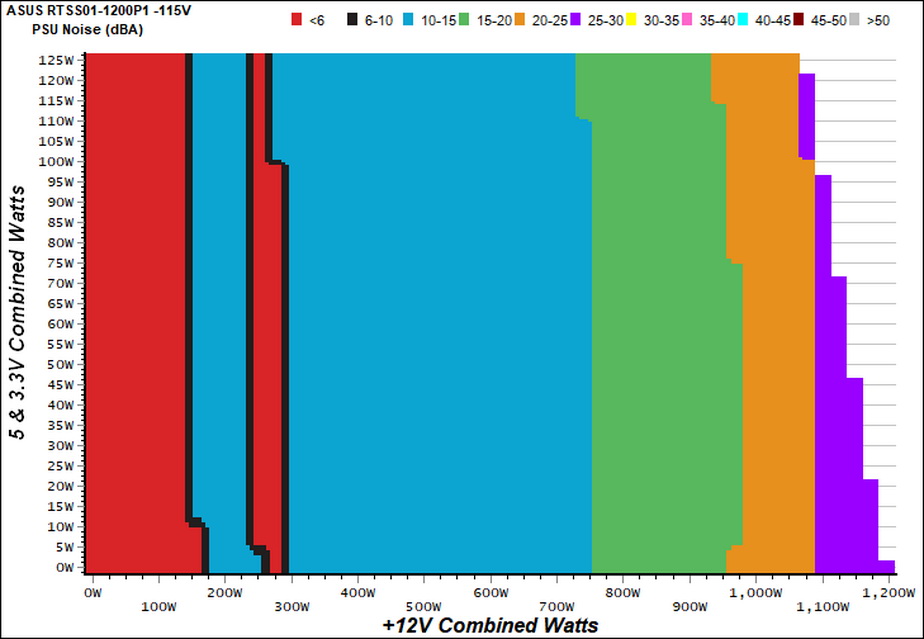
The semi-passive operation doesn't last long, probably because we apply heavy stress to the DC-DC converters. Up to 750W load the output noise is at very low levels (<15 dB[A]) and even with higher than 1100W load the noise is kept below 30 dB(A). As we already stated this is a super quiet PSU, ideal for users that hate noisy components, but still need lots of power.
Protection Features
Our protection features evaluation methodology is described in detail here.
|
Protection Features |
|
|
OCP |
12V: 141.6A (141.6%), 12.188V |
|
OPP |
1714.9W (142.91%) |
|
OTP |
✓ (160°C @ 12V Heatsink) |
|
SCP |
12V: ✓ |
|
PWR_OK |
Proper Operation |
|
NLO |
✓ |
|
SIP |
Surge: MOV |
The OCP at +12V and the OPP are set a bit higher than the normal, but the components used in this platform can easily cope since they are well above spec for a 1200W unit. The over temperature protection is working properly and the same goes for the power ok signal.
The OCP triggering point at 5VSB should be lower, in order not to allow this rail's ripple go out of the ATX specs.
DC Power Sequencing
According to Intel’s most recent Power Supply Design Guide (revision 1.4) the +12V and 5V voltages must be equal or greater than the 3.3V rail’s output at all times, during the power-up and normal operation. For our first measurement, we turn the unit off and switch it back on without any load in any of the rails.
In the second test, we set the PSU to standby mode, dial full load and start it afterwards. In the last test, while the power supply is completely switched off (we cut off the power or switch the supply off through its power switch), we dial full load before restoring power.
The 3.3V rail in all cases has a lower voltage than the +12V and 5V rails.
Our cross-load tests are described in detail here.
To generate the following charts, we set our loaders to auto mode through our custom-made software before trying more than 1500 possible load combinations with the +12V, 5V, and 3.3V rails. The load regulation deviations in each of the charts below are calculated by taking the nominal values of the rails (12V, 5V, and 3.3V) as point zero. The ambient temperature is between at 30°C (86°F) to 32°C (89.6°F).
Load Regulation Charts
Efficiency Chart
Ripple Charts
Infrared Images
We apply half-load for 10 minutes with the PSU’s top cover and cooling fan removed before taking photos with our modified FLIR E4 camera that delivers 320×240 IR resolution (76,800 pixels).
The temperatures at the internals are kept low, so there will be no problem on the long run despite of the highly relaxed fan profile.
Advanced Transient Response Tests
For details on our transient response testing, please click here.
These tests are crucial because they simulate the transient loads a PSU is likely to handle (such as booting a RAID array or an instant 100 percent load of CPU/GPUs). We call these “Advanced Transient Response Tests” and they are designed to be very tough to master, especially for a PSU with a capacity of less than 500W.
In all of the tests, we use an oscilloscope to measure the voltage drops caused by the transient load. The voltages should remain within the ATX specification's regulation limits.
We should note that the ATX spec requires for capacitive loading during the transient rests, but in our methodology we chose to apply the worst case scenario with no extra capacitance on the rails.
Advanced Transient Response at 20 Percent – 200ms
| Voltage | Before | After | Change | Pass/Fail |
|---|---|---|---|---|
| 12V | 12.223V | 12.106V | 0.96% | Pass |
| 5V | 4.977V | 4.858V | 2.39% | Pass |
| 3.3V | 3.318V | 3.144V | 5.24% | Pass |
| 5VSB | 5.078V | 5.024V | 1.06% | Pass |
Advanced Transient Response at 20 Percent – 20ms
| Voltage | Before | After | Change | Pass/Fail |
|---|---|---|---|---|
| 12V | 12.219V | 12.013V | 1.69% | Pass |
| 5V | 4.978V | 4.839V | 2.79% | Pass |
| 3.3V | 3.319V | 3.112V | 6.24% | Fail |
| 5VSB | 5.079V | 5.021V | 1.14% | Pass |
Advanced Transient Response at 20 Percent – 1ms
| Voltage | Before | After | Change | Pass/Fail |
|---|---|---|---|---|
| 12V | 12.218V | 12.008V | 1.72% | Pass |
| 5V | 4.978V | 4.837V | 2.83% | Pass |
| 3.3V | 3.319V | 3.108V | 6.36% | Fail |
| 5VSB | 5.079V | 5.017V | 1.22% | Pass |
Advanced Transient Response at 50 Percent – 200ms
| Voltage | Before | After | Change | Pass/Fail |
|---|---|---|---|---|
| 12V | 12.213V | 12.162V | 0.42% | Pass |
| 5V | 4.975V | 4.849V | 2.53% | Pass |
| 3.3V | 3.314V | 3.130V | 5.55% | Fail |
| 5VSB | 5.042V | 4.978V | 1.27% | Pass |
Advanced Transient Response at 50 Percent – 20ms
| Voltage | Before | After | Change | Pass/Fail |
|---|---|---|---|---|
| 12V | 12.211V | 12.137V | 0.61% | Pass |
| 5V | 4.976V | 4.832V | 2.89% | Pass |
| 3.3V | 3.314V | 3.103V | 6.37% | Fail |
| 5VSB | 5.042V | 4.990V | 1.03% | Pass |
Advanced Transient Response at 50 Percent – 1ms
| Voltage | Before | After | Change | Pass/Fail |
|---|---|---|---|---|
| 12V | 12.211V | 12.132V | 0.65% | Pass |
| 5V | 4.976V | 4.831V | 2.91% | Pass |
| 3.3V | 3.314V | 3.098V | 6.52% | Fail |
| 5VSB | 5.043V | 4.988V | 1.09% | Pass |
The +12V rail performs well however we would like to see better results from the minor rails, especially the 3.3V one.
Here are the oscilloscope screenshots we took during Advanced Transient Response Testing:
Transient Response At 20 Percent Load – 200ms
Transient Response At 20 Percent Load – 20ms
Transient Response At 20 Percent Load – 1ms
Transient Response At 50 Percent Load – 200ms
Transient Response At 50 Percent Load – 20ms
Transient Response At 50 Percent Load – 1ms
Turn-On Transient Tests
In the next set of tests, we measure the RTSS01-1200P1’s response in simpler transient load scenarios—during its power-on phase.
For our first measurement, we turn the power supply off, dial in the maximum current the 5VSB rail can handle, and switch the PSU back on.
In the second test, we dial the maximum load the +12V rail can handle and start the PSU while it is in standby mode. In the last test, while the PSU is completely switched off (we cut off the power or switch the PSU off through its power switch), we dial the maximum load the +12V rail can handle before restoring power. The ATX specification states that recorded spikes on all rails should not exceed 10 percent of their nominal values (+10 percent for 12V is 13.2V, and 5.5V for 5V).
The slopes rise smoothly however during the last test we notice a period with increased voltage oscillations and on top of that, it takes some time till the voltage settles down.
To learn how we measure ripple, please click here.
The following table includes the ripple levels we measured on the RTSS01-1200P1’s rails. The limits, according to the ATX specification, are 120mV (+12V) and 50mV (5V, 3.3V, and 5VSB).
| Test | 12V | 5V | 3.3V | 5VSB | Pass/Fail |
| 10% Load | 13.3 mV | 4.4 mV | 12.4 mV | 7.3 mV | Pass |
| 20% Load | 14.9 mV | 4.6 mV | 14.3 mV | 8.4 mV | Pass |
| 30% Load | 8.7 mV | 4.7 mV | 14.8 mV | 9.1 mV | Pass |
| 40% Load | 8.7 mV | 4.9 mV | 15.7 mV | 8.7 mV | Pass |
| 50% Load | 10.2 mV | 6.1 mV | 16.6 mV | 10.6 mV | Pass |
| 60% Load | 11.0 mV | 6.3 mV | 17.5 mV | 11.6 mV | Pass |
| 70% Load | 12.3 mV | 6.5 mV | 18.4 mV | 13.6 mV | Pass |
| 80% Load | 13.7 mV | 7.8 mV | 22.1 mV | 15.2 mV | Pass |
| 90% Load | 16.3 mV | 8.3 mV | 21.9 mV | 16.9 mV | Pass |
| 100% Load | 20.9 mV | 8.9 mV | 23.2 mV | 18.6 mV | Pass |
| 110% Load | 21.5 mV | 9.5 mV | 22.5 mV | 20.9 mV | Pass |
| Crossload 1 | 13.7 mV | 7.7 mV | 22.1 mV | 7.7 mV | Pass |
| Crossload 2 | 21.5 mV | 6.5 mV | 13.8 mV | 17.2 mV | Pass |
The ripple suppression is very good overall. Only the 3.3V rail is a bit high compared to the rest rails. With the use of extra in-cable caps ripple would be lower, however the cables would be bulkier. On top of that, it isn't so easy to add filtering caps on individually sleeved cables, so we believe that for a few mV lower ripple it doesn't worth the trouble, in this platform at least.
Ripple Oscilloscope Screenshots
The following oscilloscope screenshots illustrate the AC ripple and noise registered on the main rails (+12V, 5V, 3.3V and 5VSB). The bigger the fluctuations on the screen, the bigger the ripple/noise. We set 0.01 V/Div (each vertical division/box equals 0.01V) as the standard for all measurements.
Ripple At Full Load
Ripple At 110-Percent Load
Ripple At Cross-Load 1
Ripple At Cross-Load 2
To learn more about our EMI testing equipment, please check out How We Test Power Supply Units.
EMI Results – Average Detector
The unit fails because of a single high spur that exceeds the limits. There are some other high spurs, which however are below the corresponding limits.
EMI Results – Peak Detector
No problems here.
Performance Rating
The following graph shows the RTSS01-1200P1’s total performance rating, comparing it to other units we have tested. To be more specific, the tested unit is shown as 100 percent, and every other unit's performance is shown relative to it.
The performance is very high, however the SSR-1200PD scores higher. Surely the extra in-cable caps of the latter provide it with an edge. Since it lacks the OLED screen and the rest extra parts, the SSR-1200PD also has higher efficiency, which plays a major role in the final rating.
Performance Per Dollar
The following chart may be the most interesting to many of you because it depicts the product’s performance-per-dollar score. We looked up the current price of each PSU on popular online shops and used those prices and all relative performance numbers to calculate the index. Note that all of the numbers in the following graphs are normalized by the rated power of each unit.
The extra features like the OLED screen and the RGB lighting inevitably increase the product's price, so even at 250 bucks which is a reasonable price, it doesn't stand so well against the competing offerings. The recent huge price drops in high capacity units will probably create problems to this model's sales career.
Noise Rating
The graph below depicts the cooling fan's average noise over the PSU's operating range, with an ambient temperature between 30°C and 32°C (86°F to 89.6°F).
This is the quietest 1200W PSU that money can buy today! Even the super quiet HX1200i cannot compete with it.
Efficiency Rating
The following graph shows the PSU's average efficiency throughout its operating range, with an ambient temperature close to 30°C.
Asus' offering scores a bit lower than the original Seasonic platform here, because it uses a number of additional parts which require extra power of course.
The ROG Thor 1200W power supply has an MSRP of $250, which is totally justified given its features. The main problem is through the huge drop in high-capacity PSU prices lately, because large stock remains unsold with the end of the GPU mining era.
There is no room for error when it comes to the prestigious ‘Republic Of Gamers' line, so I believe that Asus thought wisely to cooperate with one of the key players in the PSU market – SeaSonic.
The Prime platform that the ROG Thor model utilizes is the best analogue platform that money can buy today, and the modifications that Asus required made it even better! The main problem of the SSR-1200PD, at least the one that I have evaluated in the past, is the increased output noise.
This is normal if you take into account that it is a power factory armed with a warranty that reaches twelve years. Seasonic's engineers wanted to stay on the safe side so they used an aggressive fan profile. On the other hand, Asus decided to use large and airflow-optimized heatsinks, because the volume alone doesn't mean much when it comes to heatsinks at least. The large heatsinks at the Thor's internals manage to keep the operating temperatures low even under high loads and tough conditions.
This means that there is no need for high airflow and even with a double ball-bearing fan, which is noisier compared to a fluid dynamic fan, the Thor 1200 is the quietest unit in its category. Even the HX1200i which had the top place in our charts, is not even close to the Thor's noise output performance – this is amazing.
The overall performance of the Thor model is exceptional, losing only in efficiency under very light loads because of the extra power requirements of the OLED screen, its controller and the RGB lighting of course.
The OLED screen looks impressive however it would be much more useful if it could be detached somehow in order to be installed in a place where it could be more accessible (e.g. on the office or at the top of the chassis). Moreover, I would like to see DC power output readings as well, besides power draw, something that would also offer efficiency readings to the interested users.
The power draw measurements might not be so easy to acquire (accurately at least) but some of you can argue that even with a 10 bucks plug power meter someone can have this information. I would like to stress here though, that besides low accuracy those power meters have very low polling rates (the measurement speed) so they are practically unusable in real life since a power supply's load constantly changes. The only usage scenario for those cheap power meters is when you want to measure the power consumption at idle or get a rough idea of the maximum load.
What would be interesting for me to see, which is not possible with a plain plug power meter, is the PSU's output which in combination with the power draw can provide actual efficiency readings. Don't expect super accurate results of course, but at least you could have an idea about efficiency levels. It is very weird to see the NZXT E series, which is also based on a modified Seasonic platform (Focus Plus gold) to only provide DC Watts, while the Asus ROG is restricted to AC Watts. A combination of both Watt readings would be the ideal scenario for both of those models, especially since Seasonic has the know how.
Apparently the high performance, the special external design and the individually sleeved cables along with the fair price, given its features, are the major selling points of the ROG Thor 1200.
I intentionally left the addressable RGB lighting out, since in order to fully exploit this feature you need a compatible mainboard (with an Aura-ready being the safest choice obviously). Unfortunately I don't have at my disposal an MSI or Gigabyte mainboard with RGB control capabilities, to check if it is compatible with the ROG unit, so I will have to leave this task to our mainboard experts, Leo Waldock and Ryan Martin. Nonetheless, Asus informed me that as long as the mainboard has RGB control capabilities and its pin configuration is the same with the PSU's provided cable, then it will work.

Like most tech recently – the price of the ASUS ROG Thor in the UK is quite high. Right now Overclockers UK have it in stock for £314.99 inc vat HERE – which is quite an asking price. That said, if you want one of the best power supplies on the market, fully loaded with features and high power delivery while emitting little noise – the ASUS ROG Thor 1200W is surely one of the finest options available.
Pros:
- The quietest 1200W PSU money can buy today.
- Fair price given its features.
- Powerful.
- High performance.
- Satisfactory transient response at +12V.
- Efficient.
- Solid platform.
- Long hold-up time.
- Properly operating power ok signal.
- Accurate AC Watt readings from the PSU's OLED screen.
- DBB fan (suitable for hard conditions).
- Fully modular.
- Lots of cables and connectors, including 2x EPS and 8x PCIe connectors.
- Mix of Individually sleeved and flat, ribbon styles, cables.
- RGB lighting with Aura compatibility.
- 10-year warranty.
Cons:
- High inrush currents during start-up.
- 3.3V transient response.
- High OCP at 5VSB, allowing for over 50mV ripple.
- The OLED screen would be more usable if it was detachable.
- Conducted EMI with average detector is a bit higher than the normal.
- Only the power draw information is provided. It would be nice to have the output Watts as well.
- To control the RGB lighting you need to have a compatible mainboard (with the safest bet been an Aura-ready one).
- Short distance between the peripheral connectors.
- Large dimensions.
KitGuru says: This is an excellent first entry in the PSU market for Asus Republic Of Gamers. The Thor unit manages to effectively challenge stiff competition and thanks to its specially designed cooling system, it earns the title of the quietest 1200W power supply that money can buy today. Currently it is the only PSU that gets the LAMBDA-A+ badge from Cybenetics, meaning that its overall noise output is below 20 dB(A)! We are anxiously waiting now for the smaller 850W Thor model to hit the market as its capacity, and lower price tag means it addresses a much larger portion of users. Still if you require lots of power and super quiet operation, the ROG Thor 1200 should be top of your list.
 KitGuru KitGuru.net – Tech News | Hardware News | Hardware Reviews | IOS | Mobile | Gaming | Graphics Cards
KitGuru KitGuru.net – Tech News | Hardware News | Hardware Reviews | IOS | Mobile | Gaming | Graphics Cards


